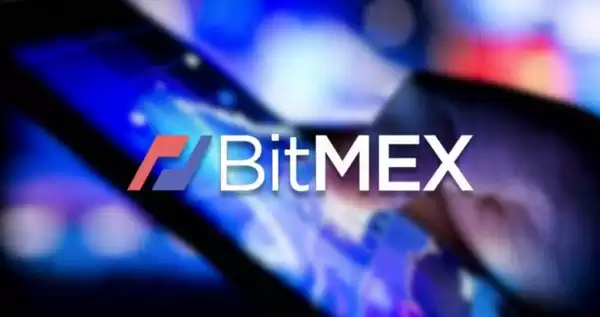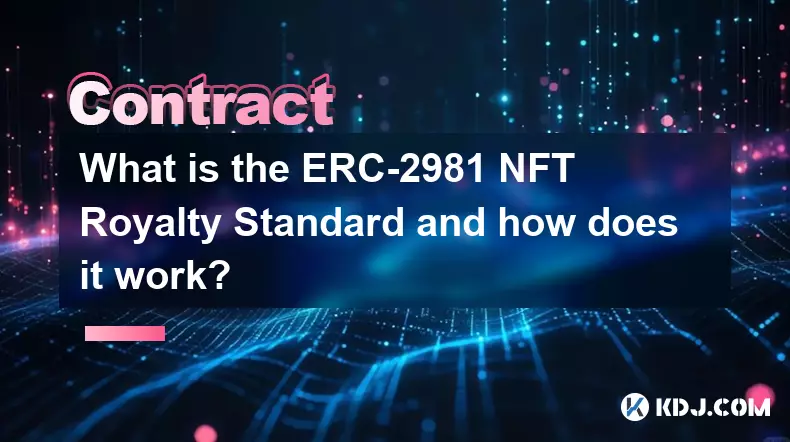-
 bitcoin
bitcoin $95203.028270 USD
-4.12% -
 ethereum
ethereum $3151.730711 USD
-1.61% -
 tether
tether $0.999170 USD
-0.04% -
 xrp
xrp $2.273039 USD
-1.55% -
 bnb
bnb $924.288432 USD
0.14% -
 solana
solana $141.112899 USD
-2.02% -
 usd-coin
usd-coin $0.999964 USD
0.02% -
 tron
tron $0.293976 USD
0.82% -
 dogecoin
dogecoin $0.160772 USD
-1.84% -
 cardano
cardano $0.506357 USD
-3.90% -
 hyperliquid
hyperliquid $37.900515 USD
0.03% -
 zcash
zcash $644.358451 USD
26.66% -
 chainlink
chainlink $14.062007 USD
-2.60% -
 bitcoin-cash
bitcoin-cash $484.381072 USD
-5.12% -
 unus-sed-leo
unus-sed-leo $9.199874 USD
0.27%
BitMEX contract shorting tutorial
To minimize risks while shorting contracts on BitMEX, traders should prioritize understanding contract specifications, choosing appropriate contracts, managing margins effectively, and implementing risk management strategies.
Nov 10, 2024 at 06:43 am

BitMEX Contract Shorting Tutorial: A Comprehensive Guide to Navigating the Short Side
Embarking on the journey of contract shorting on BitMEX, a leading cryptocurrency derivatives exchange, requires a comprehensive understanding of the platform's mechanics and market dynamics. This tutorial will delve into the nuances of shorting contracts on BitMEX, empowering traders to execute well-informed decisions and mitigate potential risks.
Before initiating a short position, traders must grasp the fundamental concepts underlying contract shorting:
- Understanding Contract Specifications: BitMEX offers perpetual contracts that track the underlying price of cryptocurrencies without an expiry date. These contracts are highly leveraged, enabling traders to magnify their returns, while also amplifying potential losses. Traders must thoroughly review the contract specifications, including the contract value, margin requirements, and funding rates.
- Choosing the Right Contract: BitMEX offers perpetual contracts for a wide range of cryptocurrencies, each with unique characteristics and market conditions. Traders should carefully evaluate the volatility, liquidity, and trading volume of different contracts to align with their trading strategies and risk tolerance.
- Margin Management: Shorting contracts on BitMEX requires traders to maintain a sufficient margin balance to cover potential losses. The margin requirement is expressed as a percentage of the contract value and varies depending on the underlying asset and market conditions. Traders must monitor their margin levels and adjust their positions accordingly to avoid liquidation.
Now that the preliminary groundwork has been laid, let's delve into the step-by-step process of shorting contracts on BitMEX:
- Open Short Position: Identify a suitable contract to short and navigate to the trading interface. Click on the "Sell" button to open a short position. Specify the contract quantity, representing the number of contracts you wish to short.
- Set Limit Order (Optional): To avoid executing a trade at an unfavorable price, traders can place a limit order, specifying the maximum price they are willing to pay to open the short position. The order will only execute if the market price reaches the specified limit.
- Manage Position: Once the short position is initiated, traders can monitor its performance and adjust it as needed. BitMEX provides real-time updates on the position's profit/loss, margin utilization, and liquidation price. Traders can modify their position size, add or remove leverage, or close the position entirely based on market conditions and risk management strategies.
- Closing Short Position: To close a short position, traders must buy back the same number of contracts they initially sold. This action reverses the original transaction, effectively closing the position and settling any profit or loss.
Understanding the mechanics of contract shorting on BitMEX is crucial, but traders must also develop a clear strategy to navigate the complexities of the market:
- Technical Analysis: Technical analysis involves studying historical price data to identify patterns, trends, and potential trading opportunities. Traders can use a variety of technical indicators and chart patterns to analyze market conditions and make informed decisions about when to enter and exit short positions.
- Risk Management: Effective risk management is paramount in contract shorting, as losses can be amplified due to leverage. Traders should establish clear risk tolerance levels and implement strategies such as stop-loss orders, position sizing, and margin management to mitigate potential risks.
- Market Sentiment: Monitoring market sentiment can provide valuable insights into the collective mood of traders and potential market trends. Sentiment indicators, such as the BitMEX Fear and Greed Index, can help gauge the prevailing market sentiment and inform trading decisions.
Remember that contract shorting carries inherent risks, and traders should approach it with a well-defined strategy and a thorough understanding of the market dynamics. By carefully considering the factors outlined above, traders can navigate the complexities of shorting contracts on BitMEX and potentially capitalize on market opportunities.
Disclaimer:info@kdj.com
The information provided is not trading advice. kdj.com does not assume any responsibility for any investments made based on the information provided in this article. Cryptocurrencies are highly volatile and it is highly recommended that you invest with caution after thorough research!
If you believe that the content used on this website infringes your copyright, please contact us immediately (info@kdj.com) and we will delete it promptly.
- Chang Tso-Lin, Warlord, Portrait: A Rare Coin's Journey to Auction
- 2025-11-16 02:55:01
- ZAR Supercoin Lands on Luno: A Stablecoin Game Changer for South Africa?
- 2025-11-16 02:50:01
- Hedera, Bitcoin, BTCFi: WBTC Integration Sparks DeFi Evolution
- 2025-11-16 00:05:01
- Shanklin Veterans Get a Pre-Christmas Treat: A Heartwarming Gathering
- 2025-11-15 23:25:01
- Zero Knowledge Proof (ZKP): Revolutionizing Crypto Presales with Fairness and Transparency
- 2025-11-15 23:25:01
- SEC, Crypto Assets, and Classification: A New York Minute on Regulation
- 2025-11-15 23:20:01
Related knowledge

What is a Denial of Service (DoS) attack in a smart contract and what are its common forms?
Nov 10,2025 at 05:20am
Understanding Denial of Service in Smart Contracts1. A Denial of Service (DoS) attack in the context of smart contracts refers to a scenario where a m...

What is a cryptographic nonce used for in transaction signing?
Nov 11,2025 at 05:59am
Understanding Cryptographic Nonces in Blockchain Transactions1. A cryptographic nonce is a random or pseudo-random number used only once in the contex...

How does inheritance work in Solidity smart contracts?
Nov 11,2025 at 10:40pm
Inheritance in Solidity: Building Modular Smart Contracts1. Inheritance in Solidity allows one contract to adopt the properties and functions of anoth...

What is the difference between an Externally Owned Account (EOA) and a Contract Account?
Nov 13,2025 at 04:00am
Understanding Externally Owned Accounts (EOA)1. An Externally Owned Account is controlled directly by a private key, which means only the holder of th...

What is the ERC-2981 NFT Royalty Standard and how does it work?
Nov 13,2025 at 05:39am
Understanding the ERC-2981 NFT Royalty Standard1. The ERC-2981 standard is a proposed Ethereum Request for Comment that introduces a royalty mechanism...

What is a sandwich attack in DeFi and how does it exploit transactions?
Nov 15,2025 at 06:39pm
Understanding Sandwich Attacks in Decentralized Finance1. A sandwich attack is a form of front-running and back-running manipulation commonly observed...

What is a Denial of Service (DoS) attack in a smart contract and what are its common forms?
Nov 10,2025 at 05:20am
Understanding Denial of Service in Smart Contracts1. A Denial of Service (DoS) attack in the context of smart contracts refers to a scenario where a m...

What is a cryptographic nonce used for in transaction signing?
Nov 11,2025 at 05:59am
Understanding Cryptographic Nonces in Blockchain Transactions1. A cryptographic nonce is a random or pseudo-random number used only once in the contex...

How does inheritance work in Solidity smart contracts?
Nov 11,2025 at 10:40pm
Inheritance in Solidity: Building Modular Smart Contracts1. Inheritance in Solidity allows one contract to adopt the properties and functions of anoth...

What is the difference between an Externally Owned Account (EOA) and a Contract Account?
Nov 13,2025 at 04:00am
Understanding Externally Owned Accounts (EOA)1. An Externally Owned Account is controlled directly by a private key, which means only the holder of th...

What is the ERC-2981 NFT Royalty Standard and how does it work?
Nov 13,2025 at 05:39am
Understanding the ERC-2981 NFT Royalty Standard1. The ERC-2981 standard is a proposed Ethereum Request for Comment that introduces a royalty mechanism...

What is a sandwich attack in DeFi and how does it exploit transactions?
Nov 15,2025 at 06:39pm
Understanding Sandwich Attacks in Decentralized Finance1. A sandwich attack is a form of front-running and back-running manipulation commonly observed...
See all articles










































































